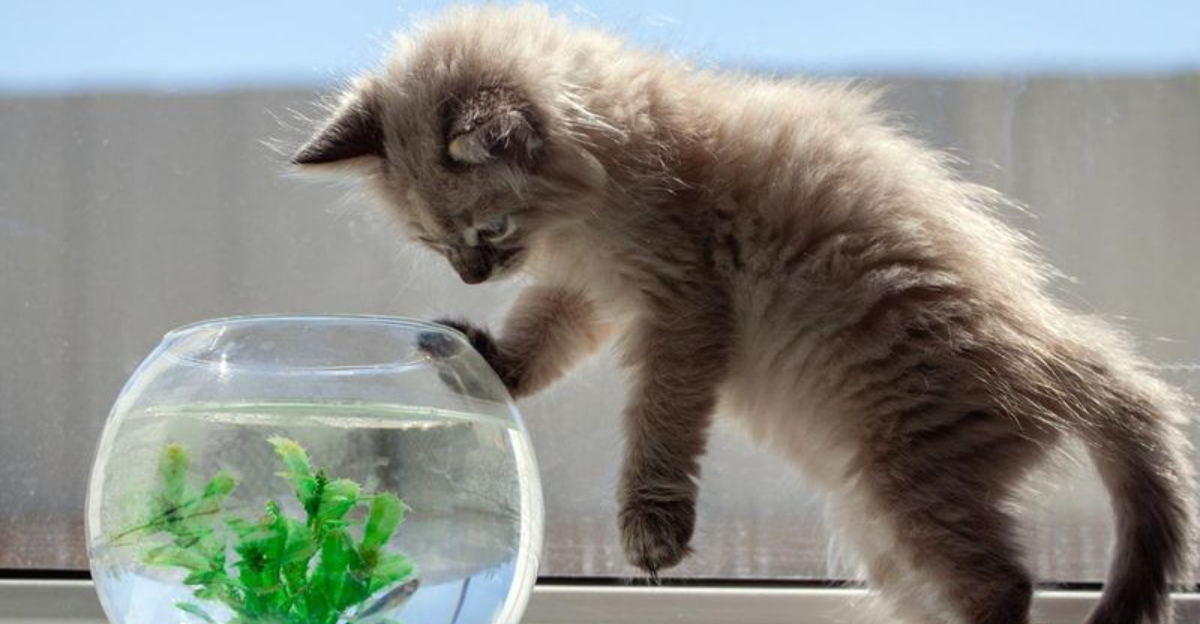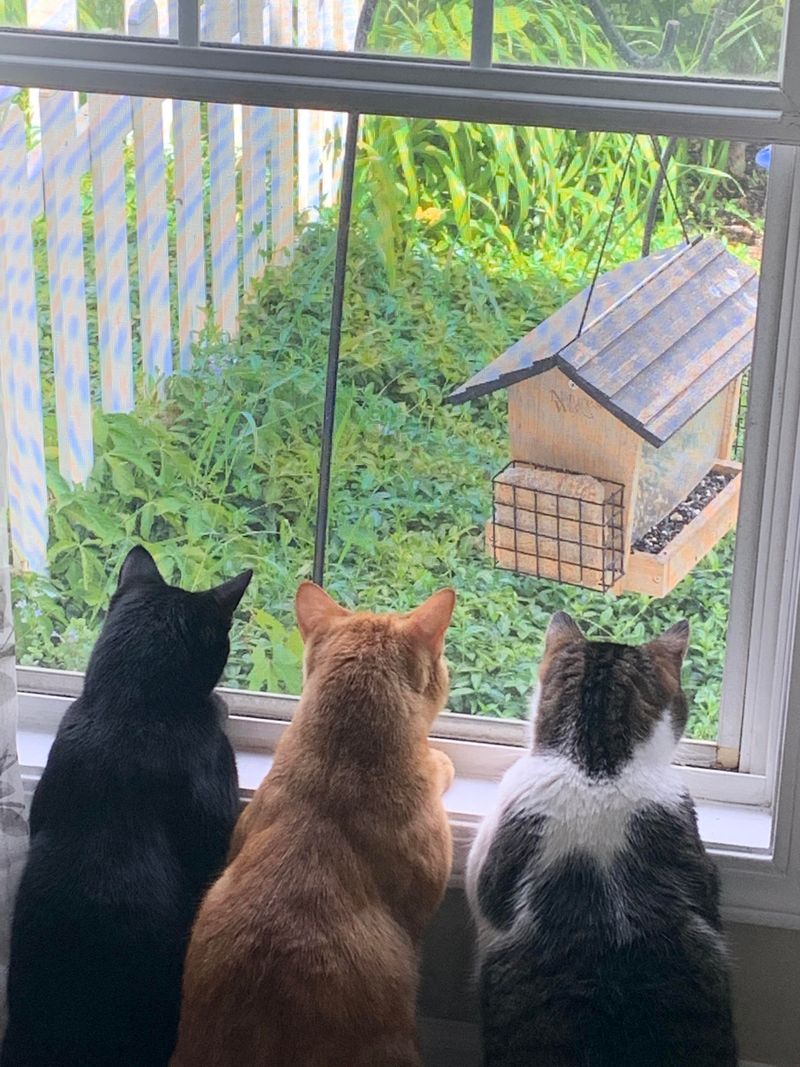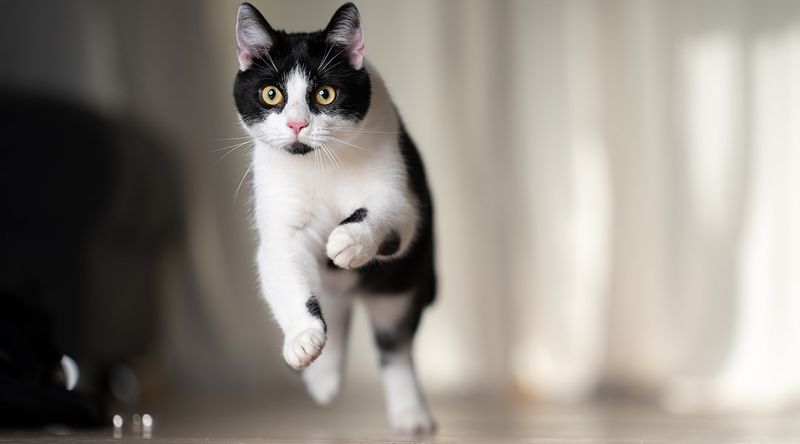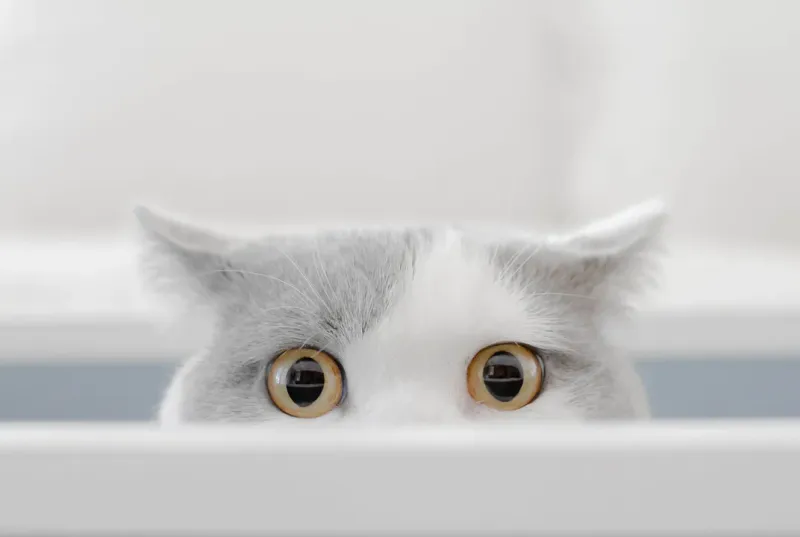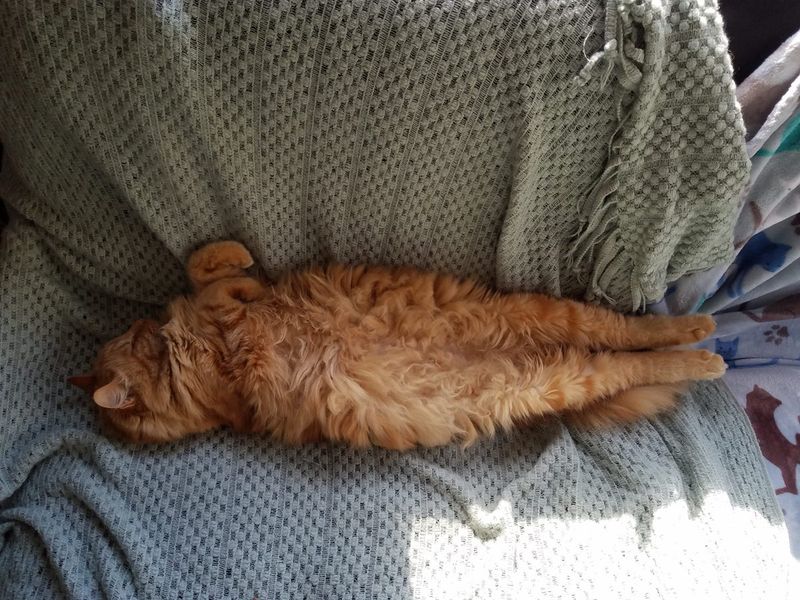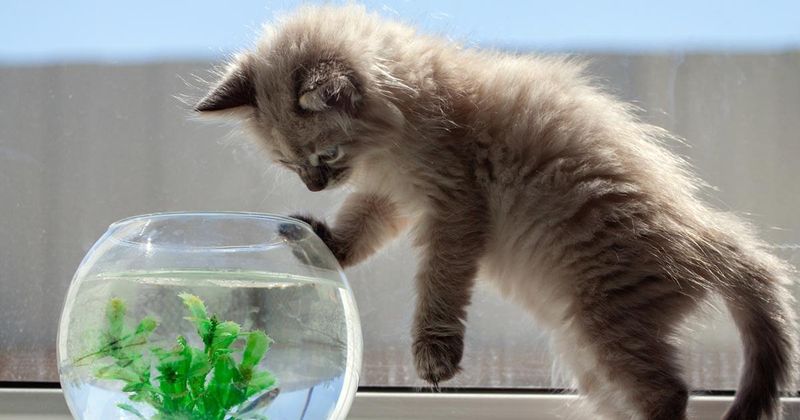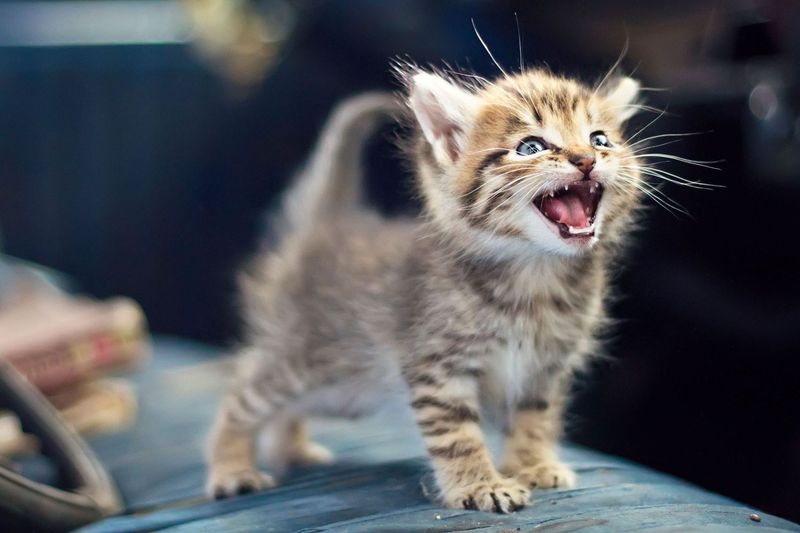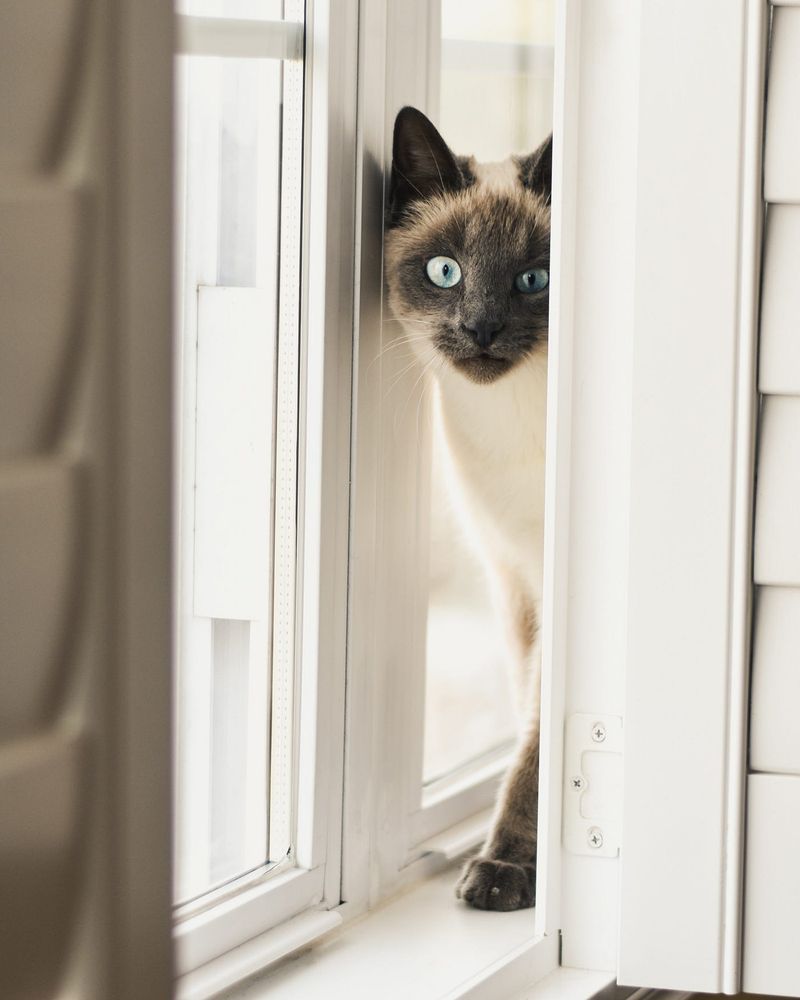📖 Table of Content:
While your feline’s calm, sleepy demeanor might dominate the hours you’re together, something entirely different may be happening once you leave. Alone time for a cat isn’t necessarily quiet or uneventful — it’s when some of their most curious behaviors emerge.
Have you ever walked in the door to find a pen moved, a pillow knocked over, or your cat staring at you like they’ve been up to something? These small clues often point to a world you don’t get to witness — the behind-the-scenes life your cat leads during your absence. Whether they’re running wild through the house or sitting completely still in front of a window, every cat finds their own way to fill the hours.
While dogs may sulk or wait anxiously for their humans to return, cats are more likely to take that solitude and turn it into an opportunity. It’s a time for exploration, self-stimulation, and the expression of behaviors rooted in instincts that go far beyond your living room. Here are eight things your cat might be doing when you’re not around — and why they might be more active (or peculiar) than you ever expected.
1. Staring Out the Window for Hours
Nothing captivates a cat’s attention quite like a window with a view. From the comfort of a sunny sill, they can observe the flutter of birds, the dash of a squirrel, or even the sway of trees. This quiet vigil offers both stimulation and relaxation, almost like meditation for your cat. Watching the world provides mental exercise, helping to ward off boredom. Even the sight of passing cars or pedestrians can seem eventful to a curious feline. For indoor cats, it’s their link to the outdoors and a safe way to engage with it. Sometimes, you might even return home to find nose prints on the glass — proof of a well-spent afternoon.
2. Engaging in Zoomies
Sudden bursts of chaotic energy are a common and often comical feature of feline life. When you’re away, your cat may indulge in full-speed sprints from room to room, often leaping onto furniture or bouncing off walls. This behavior is not random — it’s a way to release pent-up energy and simulate the chase of prey. Zoomies can happen in silence or be accompanied by thunderous paw thuds echoing across the floor. Cats who are alone for long periods are especially prone to these explosive play sessions. They might even use this time to engage with toys or chase invisible targets. While it might look like madness, it’s actually a healthy part of solo cat behavior.
3. Exploring Hidden Corners
Curiosity doesn’t take a break just because you’re out. With the house to themselves, cats often use the opportunity to explore places they’d normally avoid when you’re present. That could mean squeezing behind the couch, investigating a closet left ajar, or nosing into the cabinet under the sink. These adventures satisfy their innate need to understand and map their territory. New smells, objects, or sounds can entice them to revisit familiar areas in new ways. Sometimes, this results in minor chaos, like paw prints on clean laundry or toppled baskets. Still, for a cat, exploration is as important as rest.
4. Napping in Secret Spots
Far from being lazy, your cat’s frequent naps are a reflection of an efficient energy strategy. When you’re not home, they may rotate through multiple napping spots that you rarely notice. A tucked-away box, the middle of your bed, or a freshly folded towel stack might all serve as the perfect retreat. Each location offers a different feeling of safety, warmth, or elevation. Cats often choose sleeping places based on how well they can observe their surroundings or avoid being seen altogether. You may never discover all their preferred hideouts unless you happen upon them mid-doze. Sleep, for cats, isn’t just rest — it’s a strategic pause.
5. Rearranging Items (a.k.a. Knocking Stuff Over)
Some call it naughty; cats just call it natural behavior. Left alone, they might paw at pencils, swipe trinkets off a shelf, or nudge a coaster across a table just for the thrill. This isn’t necessarily an act of rebellion — it’s how cats interact with objects using their primary tools: paws and whiskers. These small experiments help them test texture, movement, and even sound. Knocking things down also gives an instant feedback loop, which can be especially satisfying when nothing else is moving. Though frustrating for humans, it’s a sign of a healthy, curious mind. Their tiny “redecorations” are often a reminder of how hands-on a cat’s curiosity can be.
6. Talking to Themselves (or the Room)
When the house is quiet, your cat may still fill the space with sound. Meowing, chirping, or making trill-like noises can be ways to communicate — even when there’s no audience. Some cats talk to themselves as a form of self-soothing, or because they’re responding to sights outside the window. Others may vocalize out of boredom, especially if they’re highly social or used to attention. You might hear these “monologues” faintly from outside or notice your cat seems extra vocal when you return. These one-sided conversations help them stay emotionally engaged. In their minds, they may not be alone at all.
7. Stalking Imaginary Prey
Play isn’t just about fun — for cats, it’s practice for survival. Even in a quiet living room, your cat may crouch low, wiggle their haunches, and pounce on a dust mote or shadow. These moments are driven by instinct, not necessity. Hunting behaviors like stalking, ambushing, and batting at invisible targets allow cats to stay mentally sharp. You might find toys scattered or overturned when you return home as evidence of these solo games. Sometimes, cats even “hunt” stray socks or a rogue piece of string. While it may seem like they’re just being silly, these acts are deeply rooted in their identity.
8. Watching You Leave… Then Claiming Your Spot
Before the door even closes behind you, your cat might be lining up their next move. Often, that means taking over your warm seat, snuggling into your sweater, or lying across your laptop. They’re not just seeking warmth — they’re basking in your scent, which can be comforting in your absence. This quiet ritual helps reduce their stress and makes your presence linger. Sometimes, it’s simply a matter of claiming territory in your absence. You may walk in to find a well-furred imprint on your favorite pillow. It’s a small act of possession that speaks volumes about the bond they feel.
